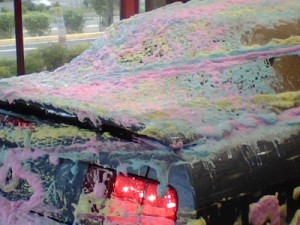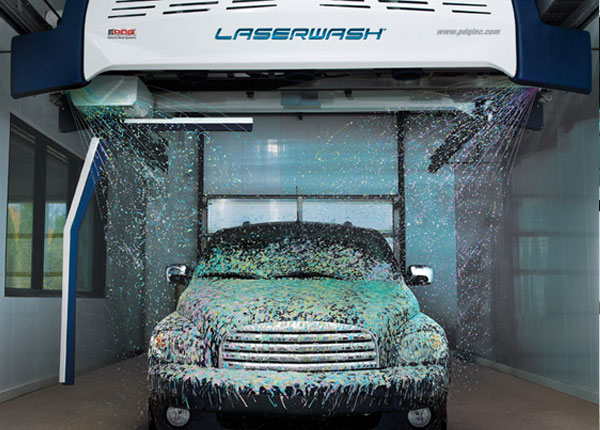Triple-Foam Makes Your Customers Happy!
If a wash owner expects customers to pay $8-$10 for a carwash, the site better offer clients something special. When tri-foam was introduced, the main purpose was to provide a unique experience for the customer. Today, however, there are many tri-foams on the market that offer various advantages and provide more than just a show.
Tri-foam types
- The conditioner/cleaner
Tri-foam works as a soap to help clean the vehicle while typically providing a shine. This product has surfactants similar to those in the other soap products.
- The clear coat polish
Tri-foam acts as a wax-type product. It protects the vehicle while causing the water to sheet or bead off the surface, assisting the drying process.
This product uses mineral seal oil, carnauba wax or non-oil based raw material to provide the benefits of a wax-type protectant. For carwashes with reclaim systems, special care should be taken to select the oil-free tri-foam.
- Conditioner/cleaner plus tri-foam with additives
These tri-foams have additives such as bug remover or glass cleaner.
- Winter formula tri-foam
This tri-foam is made with a non-freeze benefit. The winter formula product allows operators to offer the same look for their top wash in the cold as they do when the weather is above 32 degrees.
 What to choose?
What to choose?
The rule of thumb is to use the cleaner-based triple foam toward the beginning of the wash process and to use the wax-based triple foam toward the end of the wash.
Touch-free automatic: By applying the conditioner/cleaner or the conditioner/cleaner-plus directly on top of the presoak, the presoak (with the help of the triple foam) can continue cleaning. As the speed in washes has become so important, the dwell time is critical in allowing the presoak to do its work. This also aides in removal of the added foam because the triple foam would be followed by at least three more high-pressure passes. A second option in the touch-less wash is using the clear coat polish tri-foam which works best when an added layer of clear coat protection is desired. This triple foam should be added after the high-pressure rinse cycle and before the high-pressure wax cycle.
Cloth washes (rollover or conveyors): Because every cloth wash has different needs, there is not one answer for all. The question owners need to ask is what area of the process does not make them 100 percent happy?
Answer A: If it is the cleaning process, the conditioner/cleaner or the conditioner/cleaner-plus would be the best triple foam to use. This should be used after the presoak and before the wraps. This product will also add lubricity to the wraps.
Answer B: If it is the drying process, the clear coat polish should be used after the last wrap but before a rinse arch and before the wax application.
A good question
Many operators wonder what is the best way to use triple foam in their automatic wash. The following cycles will provide the best results in a touch-free automatic wash:
- Wheel wash / Side Blaster (high pressure): High pressure water will knock off the heavy dirt.
- Low pH presoak (low pressure): Low pH presoak will attack and breakdown the first layer of film on the vehicle and also clean the glass and chrome.
- High pH presoak (low pressure): High pH presoak will do the bulk of the cleaning on the painted surfaces and positively react with the low pH presoak to continue cleaning
- Tri-foam (conditioner/cleaner or conditioner/cleaner-plus): Tri-foam with cleaners and additives will allow the presoak to continue to work (dwell time).
As the presoak is cleaning, the chemicals in the triple foam are also doing their job by breaking down the bugs or cleaning the glass while providing a shine. On top of all that, they are giving a great show of color and fragrance to the customer.
- High-pressure rinse: The rinse removes any soap left on the vehicle.
- High (or low) pressure wax/clear coat protectant: The wax/clear coat cycle helps protect the car and also aides in the drying of the vehicle.
- Spot-free rinse: Going directly into the spot-free cycle from the wax cycle (without a rinse) is effective for several reasons:
- Owners don’t waste wax by rinsing it down the drain with high-pressure;
- The drying agent properties in the wax/clear coat are much more effective when rinsed only by spot-free water, thus, producing a dryer car;
- The time of one pass is saved, which means the wash can do 14 percent more vehicles on those busy days; and
- Owners save on utilities by eliminating a high-pressure pass of water.
By following these steps owners allow for the best use of the chemical technology available.


